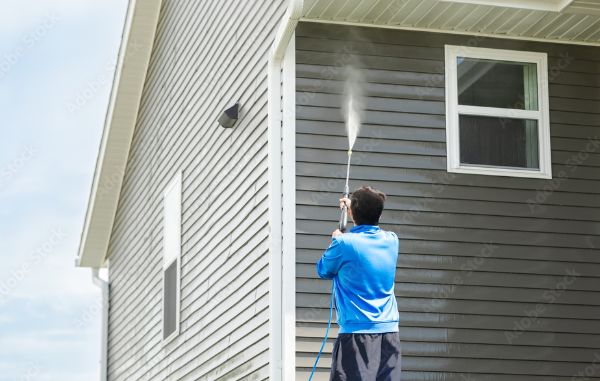When the heat of summer becomes unbearable, finding ways to cool down our homes becomes a top priority. One common question that arises is whether spraying your house with water can effectively lower its temperature.
In this blog post, we will delve into the facts to understand if this method has any significant impact on cooling down your home.
Let’s explore the important factors to consider and separate fact from fiction.

Click Here to See Over 1000 Body Cooling Products!
Table of Contents
Evaporative Cooling
Spraying water on the exterior surfaces of your house can provide a temporary cooling effect through a process called evaporative cooling. When water evaporates, it absorbs heat from its surroundings, causing a drop in temperature. As the water droplets evaporate from the surfaces, they take away some of the heat, potentially cooling down the area briefly.
Surface Material and Heat Absorption
The effectiveness of spraying water on your house’s exterior depends on the materials used in its construction. Certain materials, such as concrete or stone, can retain heat and absorb moisture more effectively than others. Spraying water on these materials can help in cooling them down, thus affecting the overall temperature of the house to some extent.
Local Climate and Humidity Levels
The effectiveness of using water to cool your house also depends on the local climate and humidity levels. In dry and arid regions, where evaporation occurs more rapidly, the cooling effect may be more noticeable. However, in areas with high humidity, the evaporation process is slower, and the impact on cooling may be minimal.
Temporary Cooling Solution
It’s important to note that spraying water on your house is a temporary cooling solution. The cooling effect is temporary because the evaporative cooling process relies on continuous evaporation. Once the water evaporates or dries up, the cooling effect diminishes. Therefore, spraying your house with water is not a long-term solution for maintaining a cool indoor environment.
Potential Drawbacks
While spraying water on your house can provide a brief cooling sensation, it may also have potential drawbacks. Excessive water exposure can damage certain building materials, leading to deterioration or mold growth. Additionally, water runoff can create slippery surfaces, posing safety hazards. It’s important to consider these factors and use water sparingly and judiciously.
Effective Alternatives
Instead of relying solely on spraying your house with water, consider other more effective cooling methods. These include:
- Insulating your home to minimize heat transfer.
- Installing reflective window coatings or using blinds/curtains to block direct sunlight.
- Using fans or air conditioners to circulate cool air indoors.
- Enhancing natural ventilation through open windows or strategically placed vents.
Conclusion
While spraying your house with water can provide a temporary cooling effect, it is not a comprehensive or long-term solution for cooling down your home. The impact is influenced by factors such as evaporation rate, surface materials, local climate, and humidity levels. It is important to understand the limitations and potential drawbacks associated with this method.
To maintain a consistently cool indoor environment, it is recommended to focus on proper insulation, shading, and ventilation techniques, along with utilizing fans or air conditioners. These methods provide more reliable and effective cooling solutions, ensuring comfort during hot summer days while also considering energy efficiency and sustainability.